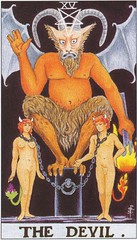A Preface to Understanding Tarot Cards
The past events of the Tarot is something that is obscured by time. There are some references and researchers that connect the origin of the Tarot with that of Ancient Egypt, while other historians and scholars suggest that the Tarot shares race with ancient gypsy cultures. Still, there are other researchers that attach an Italianorigin to the Tarot cards, and it is supposed that the Tarot Cards became a tool of divination right around the 1400s. Since that time, hundreds of dissimilar decks demonstrate evolved and are currently in use. One of the greater accepted decks being the Rider-Waite deck.
The prevalent tarot deck is separated into what is commonly called the major arcana or trump cards and minor arcane or suits of cards. The trump cards or major arcana consist of twenty two cards, all without suits. These include the Fool, the Magician, the Empress, Justice, the Wheel of Fortune and others. The minor arcana consists of four suits of cards; swords, staves, cups and coins. Present, staves are usually termed wands, but rods or batons are seen as well. Coins may be christened disks or pentacles in some tarot decks.
Tarot card interpretations are always changing ? and they display also differed significantly through time. Today, all the same, there are common and general card meanings. For example, minor arcana cards usually show an astrological meaning that changes along with the seasons of the year. On another side of things, court cards talk of humans and their nature. This nature concerns the physio-emotional traits of a human.
More specifically, the determinants of a card?s meaning are the following: Card Number, vital Number, Rulership (Astrology), Hebrew Letter, Translation, and
